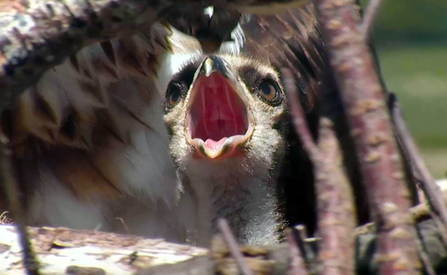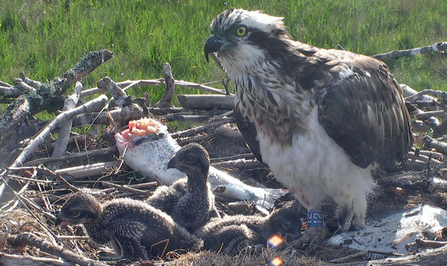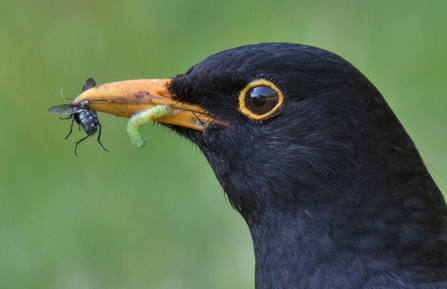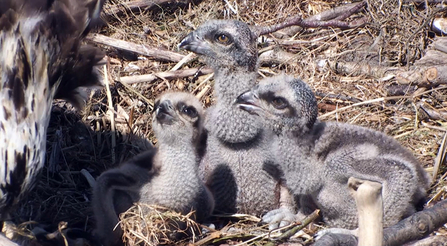The three chicks are around a fortnight old today - 16, 14 and 12 days old to be precise.
They have made it through those first 10 days of life relatively unscathed and now have an excellent chance of finishing the race - fledging in another five weeks and migrating to Africa a few weeks after that. I am always apprehensive about these first 10 days; just like most animals, it is these first few days of life that are the most precarious and present the greatest obstacles to making it through to adulthood.
It is also during these first few days of an osprey's life that we stare incessantly into the nest, wanting to reassure ourselves that everything is okay, that all the chicks are healthy and getting their fair share of food. Of course, any decent osprey mother would share the food out evenly and fairly, giving her chicks the greatest chance of surviving. Well, not quite.
Me, me - I'm next..




